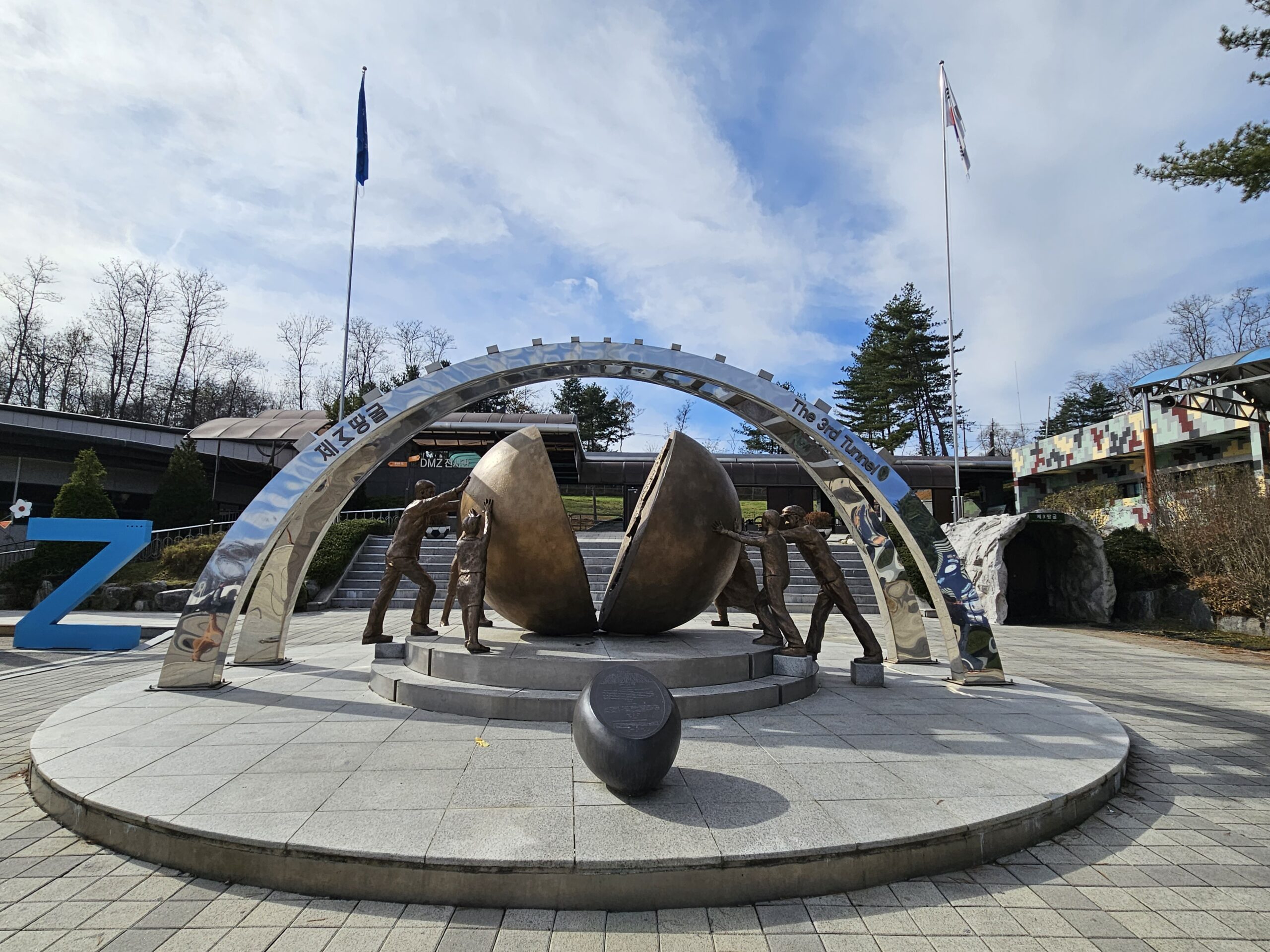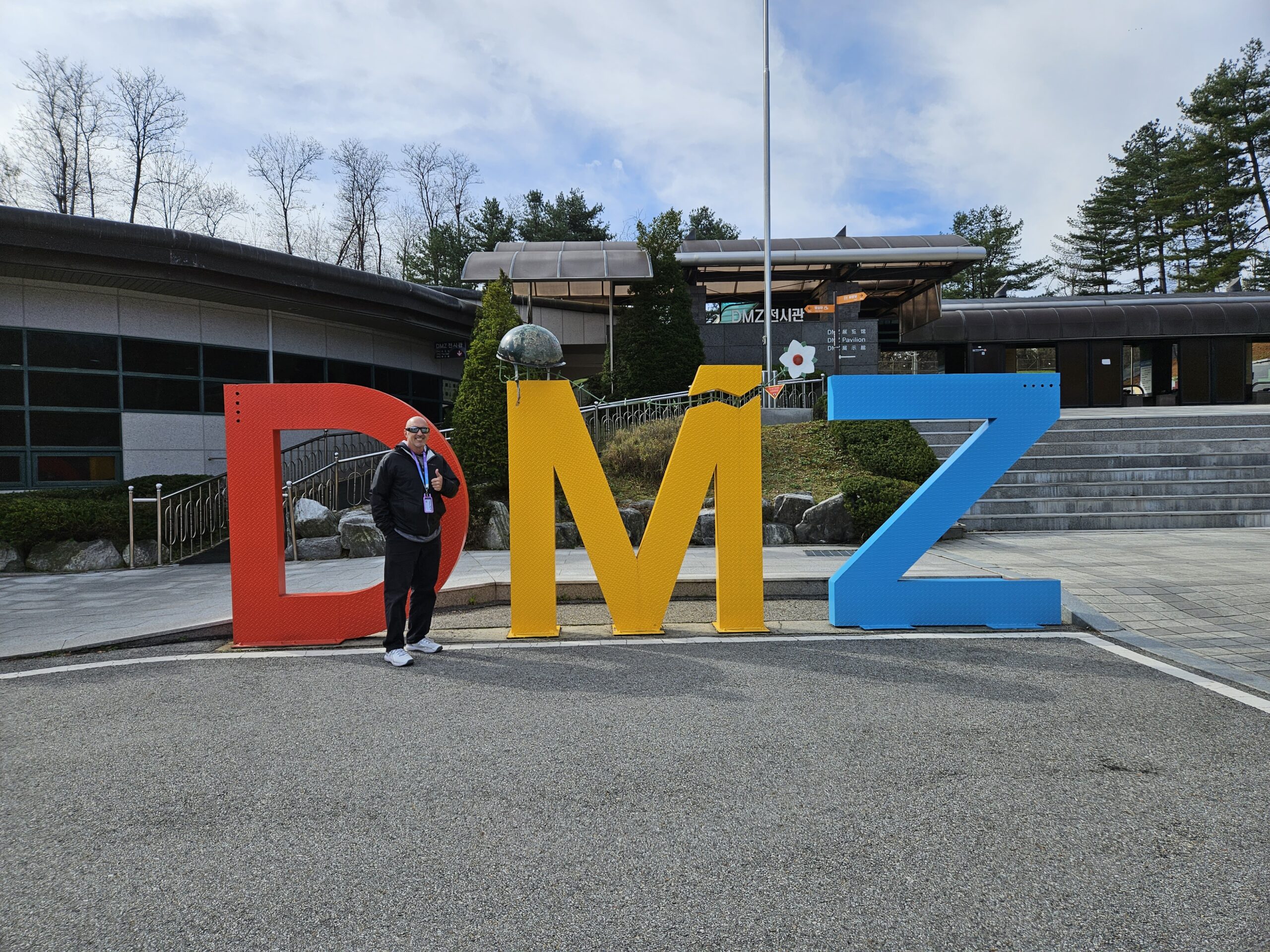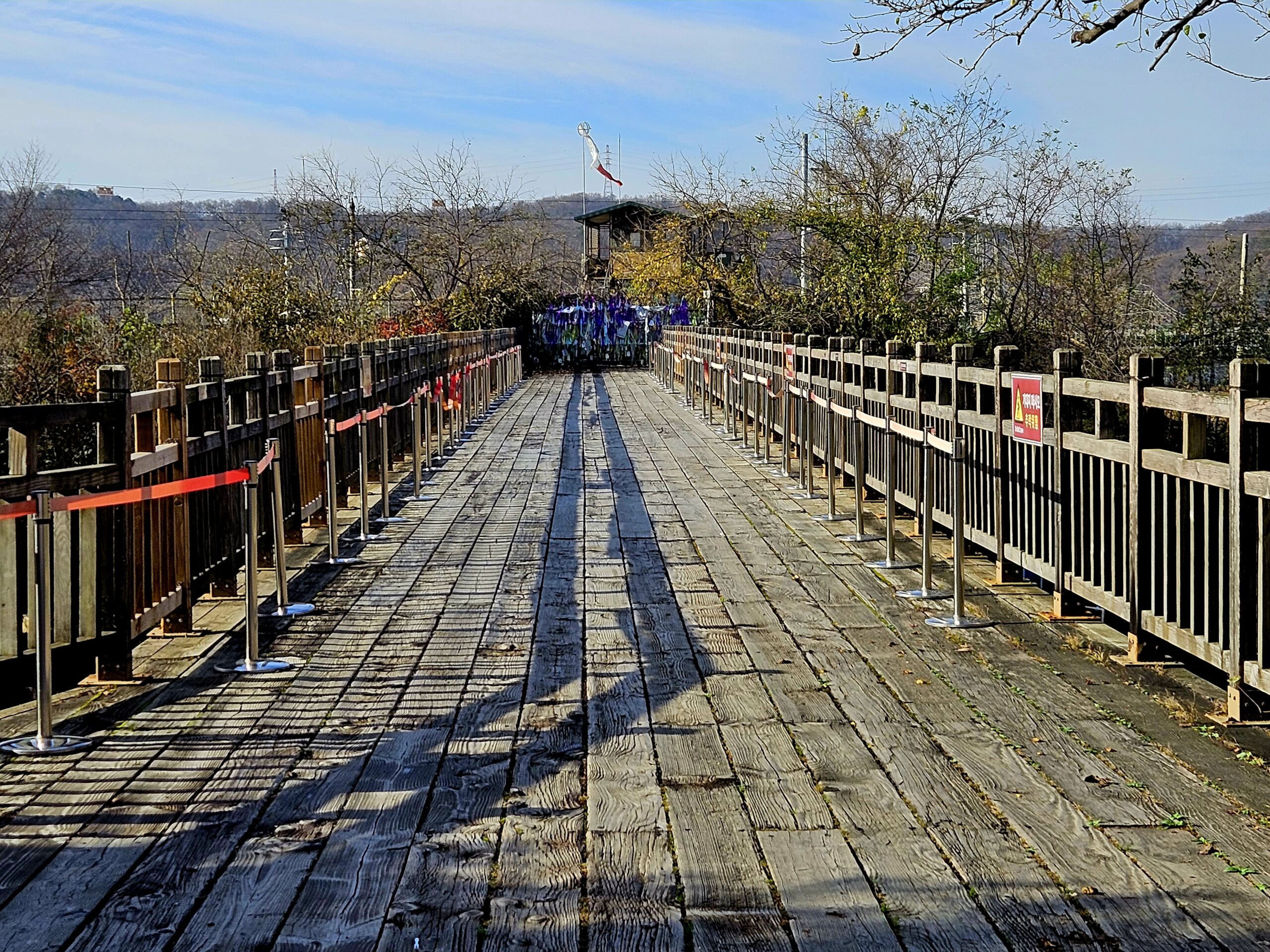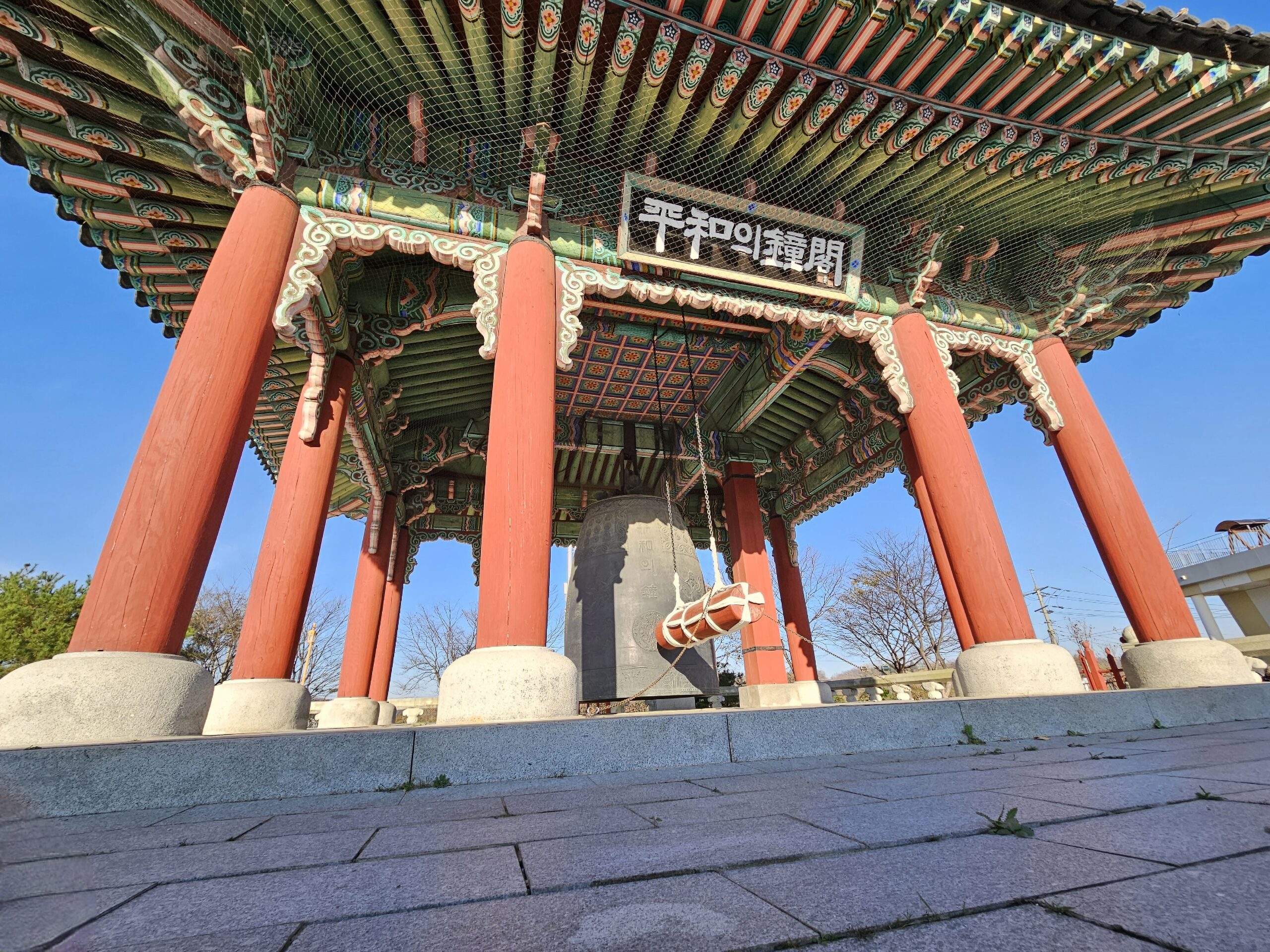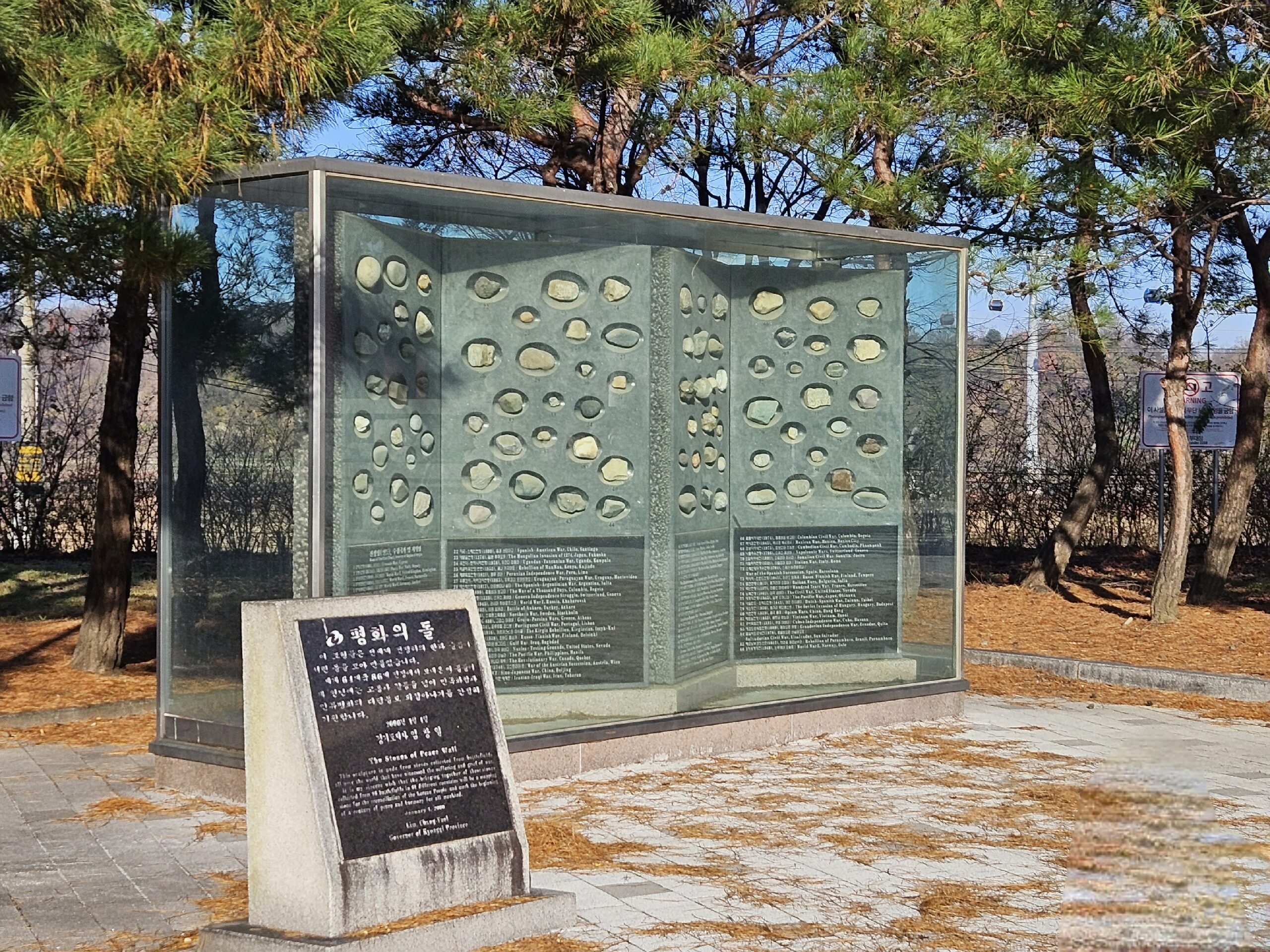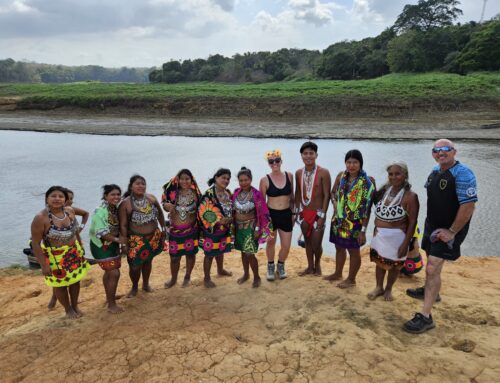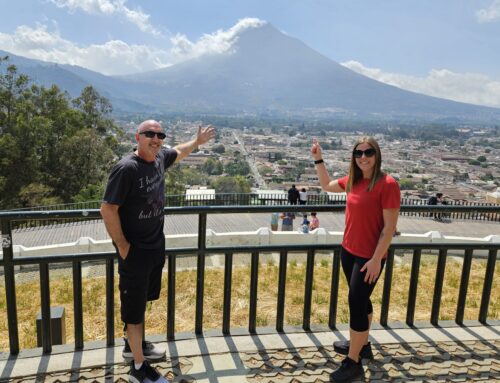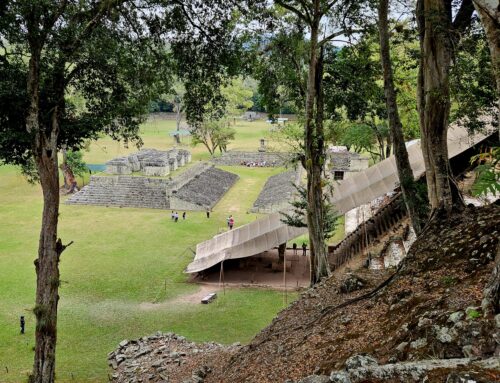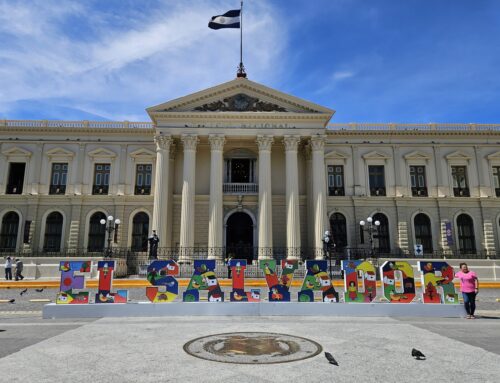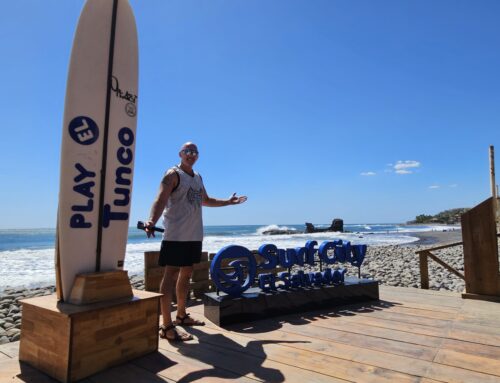The Demilitarized Zone is a strip of land running the width of the Korean peninsula separating North and South Korea. It was established in 1953 as part of the Korean Armicist by China, the UN and North Korea to end the Korean War. This was the top thing I wanted to do in all of Korea. Growing up a huge MASH fan I couldn’t wait to get here. Our tour began at the Paju Imjinak Peace Park. We got to see war remnants, the Peace Bell, a monument to the thousands of South Koreans still missing in North and the Freedom Bridge where both side famously exchanged prisoners. From there we headed to an observatory where we could look through binoculars and see people in North Korea going about daily life, riding bikes and walking the streets. It looked so set up and fake. As we looked across the empty DMZ we could see both sides flags and towers that used to house speakers blaring propaganda. Now the towers are used to jam cell and GPS signals.
After the DMZ was established and S. Korea thought they were safe they found that N. Korea was digging tunnels under the DMZ to invade again. To date the UN has found four tunnels and believes there are more. Our next stop was at one of the tunnels. We couldn’t film or bring any electronics in with us but we did get to venture down the tunnel and get within 100 yards of N. Korea.
Since the DMZ is uninhabited the flora and fauna are thriving there and it’s actually quite beautiful.
Due to the intense security we had to pass through a checkpoint both coming and going. Our last stop was at the safest village in the world just inside the checkpoint. It lacks 3 things the rest of the world has. 1. Police 2. Locks and gates on houses and 3. Crime. If you break a law here there’s no where to hide. Go north and you hit North Korean forces and South is the military checkpoint to South Korea. This area was barren for a long time until the government realized its farming potential so they divided the land into plots and gave it to 150 families that qualified. You had to be of healthy body and mind and have atleast 1 child who could farm and also be anti communist. Now they grow soy beans, rice and the national treasure, ginseng.
If you are a MASH fan or a history enthusiast you will love this tour. I couldn’t get enough. Our guide was amazing and we both had a spectacular day.

